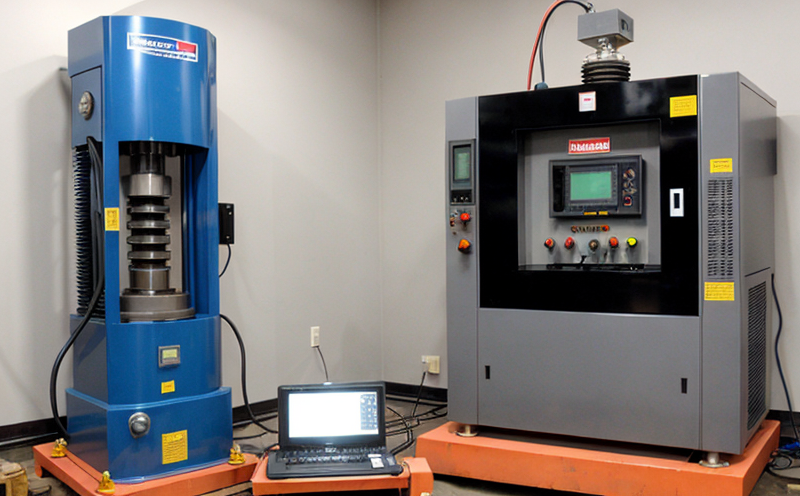SAE J1455 Vibration Testing for Truck Electrical Components
The SAE J1455 standard provides a comprehensive framework for testing truck electrical components to ensure they can withstand the harsh environments and mechanical shocks encountered in heavy-duty trucks. This testing is critical because it ensures reliability, durability, and safety of electronic parts under conditions that simulate real-world operational scenarios.
Trucks operate in diverse environments where they face various types of vibrations and shock impacts. These can originate from road surfaces, vehicle movements, and other external factors. Electrical components must be robust enough to perform consistently without failure over time. The SAE J1455 standard is designed specifically for this purpose, offering a standardized method to evaluate the performance of truck electrical components under controlled vibration conditions.
The testing process involves placing the component on a shaker table that simulates real-world shock and vibration levels. The test parameters are based on empirical data from field observations and industry experience. This ensures that the tests are relevant and provide meaningful insights into how the components will perform in actual use.
During the test, sensors monitor various parameters such as frequency, amplitude, and duration of vibrations. These measurements help determine the component's resilience to shocks and its ability to maintain functionality under these conditions. The test results are then compared against specified acceptance criteria outlined by SAE J1455.
The standard is widely recognized in the truck manufacturing industry for ensuring that electrical components meet the stringent requirements necessary for heavy-duty applications. Compliance with this standard not only enhances product quality but also improves overall safety and reliability, which are paramount considerations in the transportation sector.
By adhering to SAE J1455, manufacturers can ensure their products meet international standards, thus facilitating easier market entry and broader acceptance across different regions. This is particularly important for companies looking to expand into global markets where regulatory compliance is crucial for success.
Why It Matters
The reliability of truck electrical components directly impacts the safety, efficiency, and overall performance of heavy-duty trucks. Ensuring that these components can withstand mechanical shocks and vibrations is essential to prevent failures that could lead to accidents or operational disruptions.
Mechanical shock and vibration are common occurrences in the operation of trucks due to their rugged nature and the diverse conditions they encounter on roads. Components subjected to such stresses must be robust enough to perform consistently without failure. SAE J1455 provides a standardized method for testing these components, ensuring that manufacturers can identify potential issues early in the development process.
The test results generated by this standard are invaluable for quality managers and compliance officers as they provide clear evidence of product performance under stress conditions. This information is crucial for R&D engineers who need to refine designs and improve component durability. Additionally, procurement teams benefit from knowing that suppliers meet these stringent standards, ensuring consistent high-quality components.
In summary, SAE J1455 Vibration Testing not only enhances product quality but also improves overall safety and reliability, making it an indispensable tool for the truck manufacturing industry.
Scope and Methodology
The scope of SAE J1455 covers the vibration testing procedures specifically designed for electronic components used in heavy-duty trucks. This includes a wide range of electrical parts such as sensors, switches, relays, and other critical components that are integral to the truck's operation.
The methodology involves subjecting these components to controlled vibrations using a shaker table. The testing parameters are carefully selected based on real-world data to simulate the types of shocks and vibrations trucks experience during their operational lifecycle. This ensures that the test conditions accurately reflect the actual environments in which the components will be used.
- Frequency: Tests can range from low-frequency rumble to high-frequency jolts, depending on the specific requirements of the component being tested.
- Ampitude: The amplitude is adjusted according to the expected exposure during truck operation, ensuring that the test replicates real-world conditions as closely as possible.
- Duration: Tests are conducted for durations that reflect typical operational periods, allowing for a thorough evaluation of component resilience.
The testing process is highly technical and involves sophisticated equipment to measure and analyze the responses of the components under test. The results are then compared against acceptance criteria outlined in SAE J1455. Compliance with these standards provides assurance that the tested components meet industry best practices, enhancing trust among stakeholders.
International Acceptance and Recognition
The SAE J1455 standard is internationally recognized for its role in ensuring product quality and compliance with global regulatory requirements. This recognition allows manufacturers to easily enter new markets where adherence to specific standards is a prerequisite.
- European Union: Compliance with SAE J1455 helps truck electronics manufacturers meet the stringent requirements set by EU regulations for heavy-duty vehicles.
- United States: The standard aligns well with U.S. Department of Transportation (USDOT) guidelines, ensuring that components are suitable for use in trucks operating within this jurisdiction.
- Asia-Pacific Region: As truck manufacturing expands in regions like China and India, adherence to SAE J1455 is becoming increasingly important for market access.
The widespread acceptance of the standard means that manufacturers can rely on consistent testing protocols across different regions. This consistency reduces compliance costs and enhances product reliability, making it a valuable tool for international operations.





